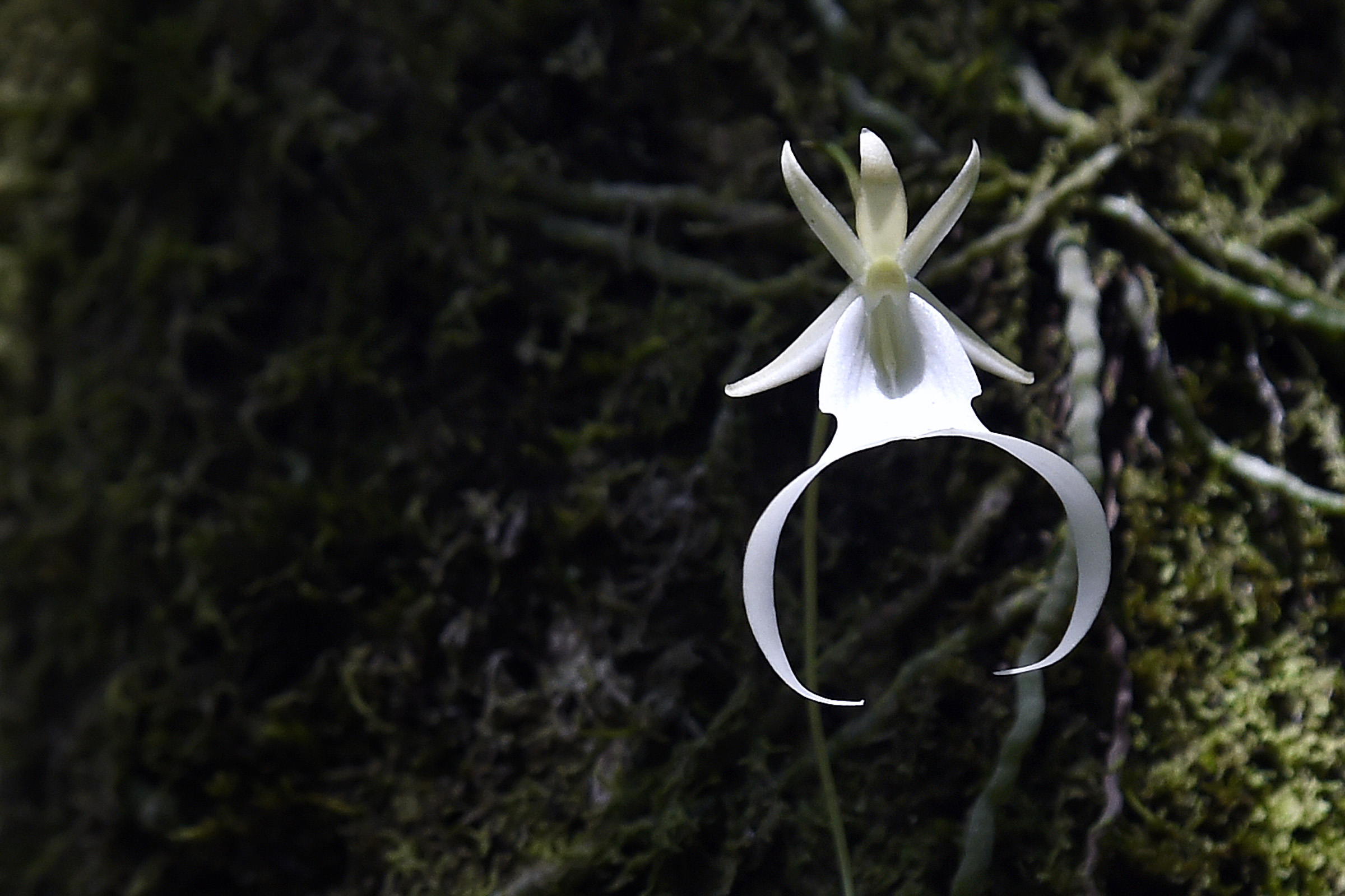'Ghost' orchids, now a candidate for federal protections, are at risk with every hurricane that blows through Southwest Florida
A spooky species of orchid at risk of disappearing forever as climate change worsens natural disasters, could soon garner conservation protections from the federal government.
The "ghost orchid," an elusive species in the orchid family that primarily resides deep in the swamps of South Florida, was announced as a candidate to receive protections under the Endangered Species Act on Wednesday, according to the U.S. Fish and Wildlife Service.
Protections for the critically endangered flower are of the utmost importance because its survival is at risk every time a hurricane blows over Florida, Melissa Abdo, a regional director of the National Parks Conservation Association, told ABC News.
Historically, hurricanes have severely impacted communities of ghost orchids. After Hurricane Irma hit Southwest Florida in 2017, the high winds caused the destruction of 30% of ghost orchids' host trees, along with 30% of ghost orchids within the Florida Panther Wildlife Refuge alone. Between 2017 and 2018, nearly 50 mature ghost orchards in the preserve were lost, Abdo said.

There are fewer than 750 mature orchids left in the wild in the U.S., Abdo said, and conservationists have not even had a chance to survey damage to the flower's population caused by Hurricane Ian, a Category 4 storm that decimated parts of Southwest Florida last month.
They destruction could be extensive, she added.
"Park staff and conservationists alike want to do all they can to protect this really rare and beautiful plant, but they need more help," Abdo said.
When in bloom, the long spurs at the bottom of the ghost orchid resemble some popularized versions of cartoon ghosts. However, most of the time, all that is visible in the rare plant are the tangled jumble of green roots clinging to the trunks of its host trees.
The rare flowering then occurs during the peak of the hot, humid summer in Southwest Florida, Abdo said.

Although the species is "incredibly iconic," they are only found in a tiny pocket of Southwest Florida, Abdo said. The current range of ghost orchids in Florida includes the Big Cypress National Preserve, Florida Panther National Wildlife Refuge, Fakahatchee Strand Preserve State Park, Audubon's Corkscrew Swamp Sanctuary and additional conservation and tribal areas in Collier, Hendry and possibly Lee counties. The flower is also found in Cuba.
The ghost orchids live in such remote locations that it took six months of searching through deep swamps of the Everglades for Abdo to find one in the wild for the first time, she said, describing the places where the flowers choose to bloom as "habitats truly out of fairy tales."
Climate change and poaching are the biggest threats to the species, Abdo said. In addition to the increase of frequency of intense storms that climate change is expected to bring, drought continues to dry up the swampy marshes of the Everglades, leaving less habitat for the ghost orchids to thrive.
"The situation has been dire for some time," she said.

In addition, because the flower blooms so infrequently, it has an overall slow reproduction rate -- imperiling it even more, Abdo said.
"The ghost orchid is a testament to how biodiversity can have a monumental impact on our collective spirit and imagination," said Elise Bennett, Florida director and attorney at the Center for Biological Diversity. "Its rare and cryptic beauty has captivated authors, photographers and filmmakers alike. I really hope federal officials make haste and protect this gorgeous specter of our swamps before it's too late."




